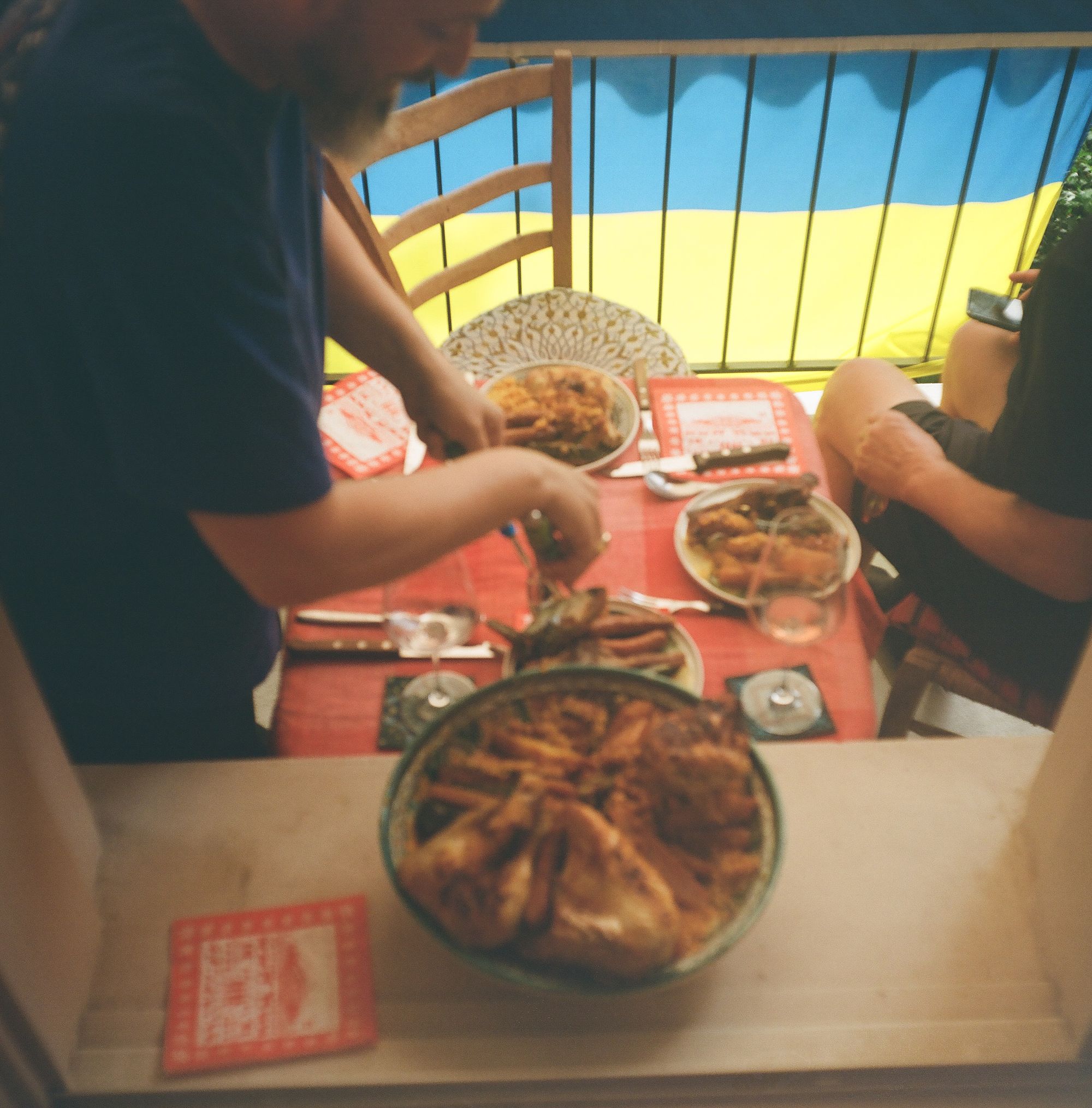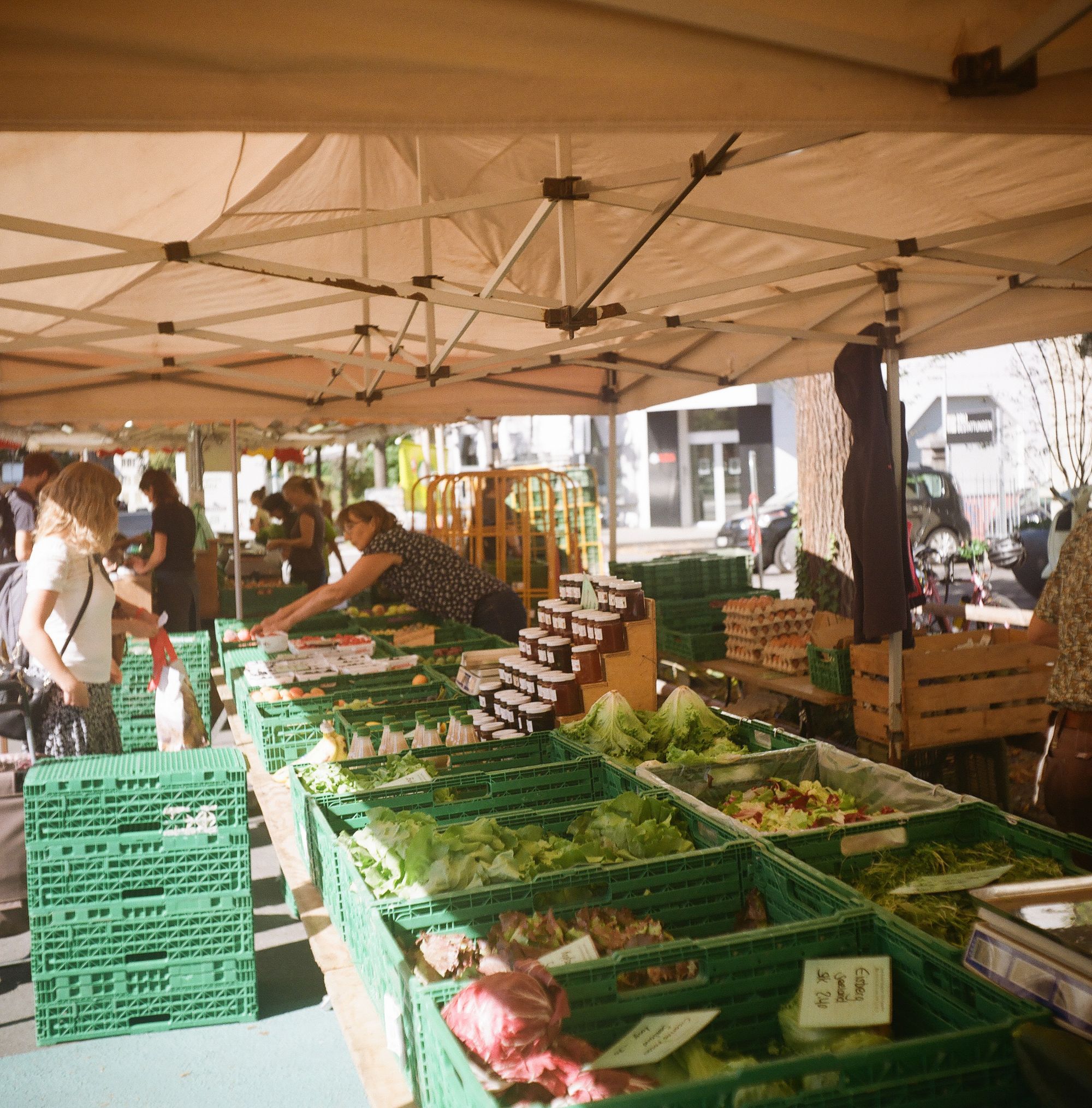What to eat ALGERIA 🇩🇿 Couscous royale
Berber tribesmen are the first known inhabitants of Algeria and are credited with inventing couscous, which is widely recognized as the national dish... When it comes to couscous recipes, there are seemingly as many variations as there are families. It is known as the dish of rich and poor alike.

Couscous royale
Published November 3, 2023 · by Amanda Rivkin
Algerian cuisine is heavily influenced by the multicultural interactions between Berbers, Arabs, Turks, Andalusians, Spaniards and the French, the result of patterns of migration and Mediterranean conquests. At its core, Berber cuisine consists of vegetables and cereals and includes dishes centered around bread, meat such as lamb, beef or poultry, vegetables, olive oil and fresh herbs.
Berber tribesmen are the first known inhabitants of Algeria and are credited with inventing couscous, which is widely recognized as the national dish. Lucie Boles, a food historian, writes that couscous is likely as old as the reign of the North African Numidian King Masinissa, an ally of Rome. Boles records that cooking vessels like those used to make couscous, known by the French name couscoussier, were discovered in graves dating back to the third century BC.
The arrival of Arabs in approximately 600 AD meant the arrival of spices such as saffron, nutmeg, ginger, cloves and cinnamon. Olive oil and fruits were reportedly introduced to Algerian cuisine with the Spanish invasion in the 16th century. The discovery of the “new world” brought with it the introduction of potatoes, zucchini and chilis to Algerian cuisine.

When French forces arrived two centuries later, native Algerians were forced to surrender their land and their crops to their new colonial overlords. The French legacy in Algeria remains strong to this day as, after Arabic, French is the second official language after Arabic. Certain aspects of the local cuisine, such as the baguette, and café culture reflect this lingering influence.
The Swiss government-owned news service Swiss Info reports that the first wave of Swiss migration to Algeria came in the mid-19th century, not long after the French seized control. Due to the French colonial influence in Algeria, many francophone Swiss took up residence in the colony in a “para-colonial” process, according to University of Geneva sociologist Marisa Fois.
Napoleon III awarded a Geneva-based Swiss company with 20,000 hectares of land seized in Sétif, Algeria. One of the co-founders of this firm was Swiss national Henry Dunant, better known for his humanitarian work as one of the co-founders of the Red Cross. One of the wealthiest French-Algerian families, the Borgeaud family, was also Swiss. While Switzerland had no colonial ambition of its own, its citizens enjoyed the benefits of colonialism, or in sociologist Fois’ words, “colonialism without colonies.”
In the years preceding Algeria’s declaration of independence, Swiss nationals residing in the French colony made a beeline for the exit. Beginning in 1956, Swiss departures began to exceed Swiss arrivals. Repatriating Swiss nationals became a priority for the confederation and by 1958, the federal government supported a solidarity fund for Swiss abroad.
In 1961, the Swiss community in Algeria suffered 14 deaths and 10 kidnappings during the Algerian war of independence. At the time of Algerian independence in 1962, there were 2,000 Swiss nationals in Algeria, which Swiss Info described as “one of the biggest colonies of Swiss overseas,” though more Swiss nationals resided in Morocco.
Charles Gallagher wrote in an American University Field Staff Reports Service paper entitled, “The Algerians in Switzerland: An Essay on Freedom,” published in 1959, that there were also “embarrassing cases of espionage involving Swiss officials” who allegedly “informed the French government on Algerian activities in the country.”
Further, Gallagher recorded that the presence of more Algerians being granted temporary residence in Switzerland “under the most exotic passports” lead to a “shadow of terrorism and counterterrorism.” The result was “unpleasantly blatant in Belgium, and caused several deaths in West Germany.” Paris also lobbed accusations that Swiss banks were underwriting covert arms sales to the Algerian insurgency.
At the same time in the fraught years leading up to Algeria’s independence, Montreux was the “summer capital” of Ferhat Abbas, the provisional prime minister of Algeria who became the first president of the national assembly and then acting president after independence.
When it came time for France’s newspaper of record, Le Monde, to reflect in 2022 on the 60 years since Algeria’s independence in 2022, with the signing of the Évian Accords between Paris and the provisional government of the Algerian Republic on March 18, 1962, the headline described Switzerland as “the great facilitator of peace in Algeria.”

When it comes to couscous recipes, there are seemingly as many variations as there are families. It is known as the dish of rich and poor alike. In Algeria, couscous is generally served with a stew of beef, chicken or lamb and carrots, chickpeas, green beans and zucchini. The royale version of Algerian couscous includes the spicy lamb sausage merguez. There are also variations with fish.
To prepare Algerian couscous, usually water and olive oil are rubbed into the couscous by hand until it forms small balls. This is then steamed in a special steamer pot on top of the stew for up to an hour until the couscous is fluffy. The meat and vegetables are then placed on top of the couscous.
Recipe
Ingredients:
2 zucchinis
3 carrots
2 potatoes
2 turnips
1 handful of haricot verts
3 small purple onions or one large purple onion
1 shallot or two cloves of garlic
1 whole halal chicken quartered or 4 chicken legs
2 lamb cutlets
6 small merguez sausage or 3 large merguez sausages
Olive oil
200 grams of tomato paste
Harissa
Ras el hanout
Saffron
Coriander
Spicy paprika
Tumeric
Salt to taste
Directions:
Step 1: Prepare all your vegetables. For the onions, dice them between crude and fine, likewise with the shallot. Snip the ends of the haricot verts. For the carrots, potatoes and shallots, peel and quarter them length wise. For the zucchini, cut off the ends and quarter length wise. Set aside.
Step 2: Quarter the chicken if whole or gather the chicken legs. Preheat the oven to about 170 degrees centigrade.
Step 3: One pot will be used to make the stew but first it will be needed to brown the meat. A second deep tray with sides will go in the oven with the meat. Grease the deep tray with a fine coat of olive oil. Pour a few centimeters of olive oil into the pot that will be used for the stew. For the first pot, make sure to have a strainer and a pot deep enough that the couscous can steam on top of it.
Step 4: Turn on the pot with a few centimeters of oil to a medium to high heat. Fry the chicken and lamb, beginning with the chicken, until golden brown on the outside, adding a pinch of salt. Do this in batches, if needed. Place browned chicken in the tray for the oven but leave aside for the moment.
Step 5: Turn down the heat on the pot to low after browning the meet. Add the diced purple onions. Wait a few minutes before adding the shallot or garlic.
Step 6: Prepare one liter of boiling water.
Step 7: Then start with the root vegetables. Turn up the heat slightly after adding them. Stir until they are a bit but not too brown.
Step 8: Add tomato paste, then the zucchini and two teaspoons of harissa. Stir until all the vegetables are covered in the mixture. Add a pinch of salt and two teaspoons of ras el hanout. Then add saffron, and a teaspoon of coriander, spicy paprika and turmeric.
Step 9: Cover the vegetables with hot water and let sit on a low heat.
Step 10: Drain the garbanzo beans of any water if fresh boiled or juice if they were canned in.
Step 11: Ladle the stew sauce over the meat, sprinkle salt over the meat and place in the oven for approximately one hour.
Step 12: About 35-40 minutes after the meat is in the oven, begin to prepare the couscous. Pour one liter of couscous into a wide pan. Add 100 grams of olive oil. Add 250 grams of warm water. Roll the combination with your hands. Let sit ten minutes.
Step 13: Add the garbanzo beans, the haricot vert and green beans to the stew.
Step 14: Place the couscous into a strainer or the couscoussier and set on top of the stew for 20 minutes. Cover.
Step 15: Place the couscous into a tagine if one is available or a large round serving dish if not. Then carefully arrange the vegetables on top in a ray of sun like formation.
Step 16: Keep an eye on the meat and take it out of the oven when ready.
Step 17: Ladle the stew on top of the couscous and cover for another 5-10 minutes. Add the meat around the center of the tagine or large serving dish and cover for presentation purposes until ready to serve.
Tips, tricks and notes:
Our culinary outing to La Maison taught us to braise rather than stew the meat. The meat is still juicy as it braises in the oven in stew juice but the skin remains crispy instead. This recipe incorporates this technique.
Learn where to eat Algerian food in Switzerland.
Follow our social media pages @swissglobaldining on Instagram, TikTok and YouTube